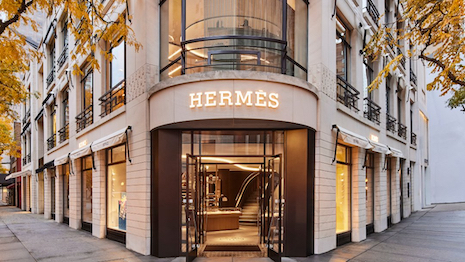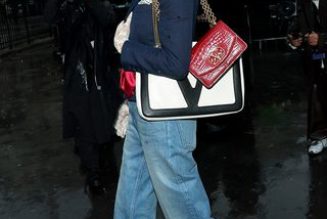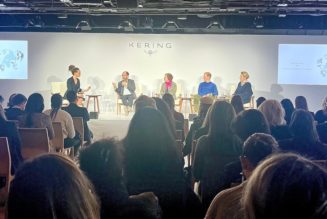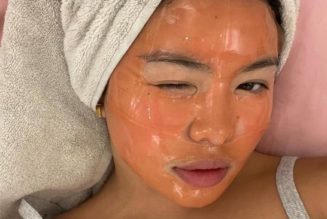 Olga Merzlyakova is a strategy consultant, startup mentor and principal at Oliver Wyman, Munich
Olga Merzlyakova is a strategy consultant, startup mentor and principal at Oliver Wyman, Munich
In today’s omnichannel world, it can be challenging to attribute sales to a specific point of presence.
Customers have the freedom to discover brands online and complete their purchase in-store or receive assistance in-store and then choose home delivery. However, luxury fashion brands acknowledge the importance of physical retail, as is evidenced by increased spending on adding new stores and refurbishing existing ones.
Yet, the productivity of bricks-and-mortar stores varies significantly across brands.
Case-by-case
For instance, Hermès stands out as a leading brand in terms of revenue per store, generating EUR 38 million per store annually. In contrast, Gucci generates below EUR 20 million and Prada below EUR 10 million per store.
Hermès’ non-trivial pricing and marketing approach, brand heritage, exclusivity and desirability are probably the biggest reasons for such effectiveness. But beyond that, its retail footprint and operations also stand out among peers.
What is the winning formula?
As a business consultant, I seek answers in numbers. So, I turned to the data on store networks as listed on luxury brands’ websites and uncovered five factors that set Hermès’ store footprint and operations apart from those of its competitors.
Location
The three key success factors of any real estate-related business are “location, location, location”.
Hermès’ footprint reflects a careful selection of locations. While there are Hermès stores in all luxury capitals, they are less common outside of them.
 Hermès reopened after renovating and expanding a Chicago flagship in October 2023. Image credit: Hermès
Hermès reopened after renovating and expanding a Chicago flagship in October 2023. Image credit: Hermès
Hermès’ boutiques are concentrated in the 25 top luxury retail cities. These cities account for 41 percent of Hermès’ footprint, but only for 35-36 percent of that of its peers Louis Vuitton and Gucci.
But within these cities, Hermès’ presence is sparser. Hermès maintains an average of five stores in these cities whereas Louis Vuitton maintains seven and Gucci almost eight.
Hermès’ location strategy successfully balances reach and exclusivity to create a footprint that is both visible and highly sought after.
Exposure to travel retail
Compared to other luxury brands, Hermès has almost 15 percent of its physical points of sale at airports, compared to 8 percent at Gucci and 5-6 percent at Louis Vuitton. The return of air travel at scale makes airports an ideal destination for catching the most attractive buyers: businesspeople and Chinese tourists.
Major luxury brands have made travel retail a centerpiece of their strategies. For example, Gucci announced its two-pillar brand elevation strategy last year, and travel was one of those pillars.
Standalone spaces over department stores
Hermès holds a lower share of stores located in malls or department stores: 44 percent compared to almost 70 percent at Gucci and Louis Vuitton.
This is one of the factors that contribute to the brand’s unique, memorable experience, which is also linked to exclusivity. Standalone boutiques are an inherent part of the shopping experience of Europe’s fashion capitals such as Paris, London, and Milan.
In Asia, where the luxury shopping experience has traditionally been based on high-end malls that offer convenience, shoppers also want something different now: an immersive experience and dialog.
With the trend towards more unique events, performances and collaborations with artists, luxury fashion stores are more and more becoming a destination on their own.
Consumers’ desire to go places and be seen, amplified by social media, makes standalone shops win versus the anonymous utility of the malls.
Large store space
According to information on over 80 Hermès stores, its shops are typically larger than those of its closest competitors.
At Hermès, the average store space exceeds 600 square meters, or 6,500 square feet, a number that however includes the newly opened 4,200 square meter flagship store on New York’s Madison Avenue, amounting to 45,000 square feet.
At Gucci, the calculated average store is 440 square meters, equaling 4700 square feet. Larger spaces allow visitors to comprehend the whole “16 Metiers” portfolio, establishing a 360-lifestyle brand image that extends beyond fashion.
Decentralized staffing model
There are on average 23 sales FTEs, or full-time equivalent employees, at Hermès stores, compared to 15 at Prada, for example.
Additionally, store managers and sales associates are given more power than at other brands when it comes to, for instance, deciding on product assortment in each store as well as having control over how and to whom the prestigious leather goods are sold.
In the ever-evolving landscape of luxury fashion bricks-and-mortar retail, the success formula seems to contain a blend of strategic location selection, travel retail exposure, a penchant for standalone spaces, larger store dimensions and a highly personalized approach to sales.
These factors, among others, contribute to Hermès excelling in the physical retail landscape, capturing the hearts of luxury shoppers worldwide.
Olga Merzlyakova is a Munich-based strategy consultant with a focus on consumer brands.









